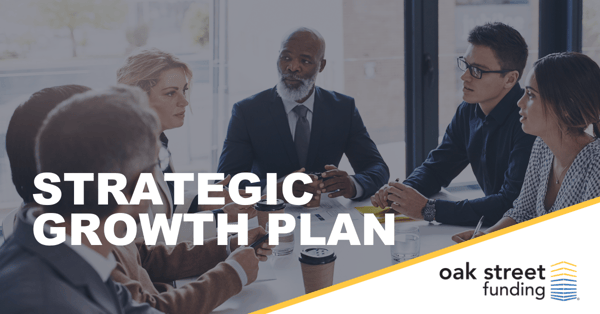.png?width=600&height=314&name=Resources%20Thumbnails%20(7).png)
Partner buy-ins have been on the rise given the recent trend coined “The Great Retirement” or “Silver Tsunami.” By 2030, all Baby Boomers will be 65 or older, and current data indicates that millions are exiting the workforce annually. The U.S. Bureau of Labor Statistics projects a substantial increase in the retirement rate, with potential labor shortages in key sectors. Furthermore, studies suggest that this demographic shift will not only impact the availability of experienced leadership but also potentially lead to a significant knowledge gap within organizations. Given this impending workforce transformation, developing a structured and transparent partner buy-in plan is no longer a luxury, but a necessity.
The Plan
The plan for a partner buy-in should cover four topics: eligibility criteria, valuation and cost, financing options, and expectations for new partners. Each buy-in structure should be as unique as the company. The plan is important because it helps make sure everyone knows what to expect. In some firms, new partners are surprised by the cost or expectations because they weren’t laid out in a concise format beforehand. A comprehensive and readily accessible plan serves to prevent such discrepancies, fostering transparency and trust.
1. Partner eligibility criteria
The plan should explicitly define the requirements for partnership to maintain fairness and give aspiring partners a roadmap to follow. Typically, businesses should look for employees who go above and beyond, have integrity, and demonstrate a high level of both technical and leadership skills. Some firms may offer partnerships to employees with a niche expertise that will increase the value of the business’s services. In companies where the criteria are vague, favoritism or even nepotism can come into play. Therefore, the plan must include measurable metrics to help prevent these issues.
2. Valuation and cost
The cost of a partner buy-in is typically determined by a valuation of the firm multiplied by the ownership percentage. However, as noted in the example below, some firms choose to add the goodwill value of the firm to the accrual basis capital and then multiply by the partner’s percentage of the firm.

Other companies will set a fixed price for all buy-ins. For example, The Rosenberg Survey polled 400 CPA firms and found the average CPA buy-in cost is $144,000. Some businesses require new partners to make an immediate lump-sum payment in cash or secure a loan to cover the buy-in. Generally, it’s preferable to make those payments to the business -- rather than directly to the other partners -- because doing so increases the company’s capitalization. Increased capitalization can improve a firm's credit rating, allow for more business investment, and overall provides a more stable business. It is important to note that the implications of buy-in payments should be carefully weighed, as they have a direct impact on the financial health of the partnership.
3. Financing options
Very few new partners have access to large amounts of cash, therefore many companies are creating opportunities for financing buy-ins. These options range from internal payment plans to externally secured loans, each with its own set of advantages and considerations.
Internal Financing: Some businesses offer internal financing with repayments taken from future payroll and profit distributions. Others may expect payments quarterly or annually, perhaps deducted from future shares of profits. However, internal financing can create complexities in payroll management and potentially strain the company's cash flow if not carefully managed.
External Financing with Company Guarantee: What’s often a more practical and workable approach is for the company to guarantee financing from an outside lender, helping the new partner obtain a better rate and terms than possible on his or her own. The new partner then pays the borrowed amount directly to the business, which adjusts his or her compensation to cover the debt service. This approach gives the company a healthy infusion of capital in return for taking on the minor risk of the loan guarantee.
As an example, Oak Street Funding provides specialty financing specifically designed for partner buy-ins. The new partners take out a loan using the company’s value as the collateral with a guarantee from the business. With this plan, companies are able to expedite the buy-in process without dipping into their cash reserves or encountering potential payroll deduction problems. New partners are completely vested in the rights and privileges of full partnership immediately and the company is not responsible for holding a seller’s note.
4. Partner expectations
The plan should also explicitly outline the expectations and responsibilities for new partners. What performance metrics or professional development milestones are they expected to reach and when? If he or she fails to meet the expectations, what measures will be taken? Making partner in a company isn’t a finish line; in fact, it is a level up to greater reward and responsibility.
At a minimum, partners should maintain the credentials they held when they made partner. However, many new partners find they must work longer hours to ensure the company’s profitability which is now more directly tied to their compensation. It is important that professionals aspiring to become partner and their company agree on the expectations to prevent misunderstandings.
Conclusion
Making partner is an exciting milestone many professionals work hard to achieve. Following an established plan for partner buy-ins will help ensure a successful transition. Additionally, using outside capital to finance the cost of the buy-in can help eliminate friction points. Oak Street Funding’s partner buy-in financing solutions help address the financial needs of both the company and the incoming partner. With a customized solution tailored to the needs of each company, Oak Street’s buy-in financing is simple and the time from application to funding is short. Contact us today to get started!


.png?width=600&height=314&name=Resources%20Thumbnails%20(7).png)



/Resources%20Thumbnails%20(75).png?width=600&height=314&name=Resources%20Thumbnails%20(75).png)